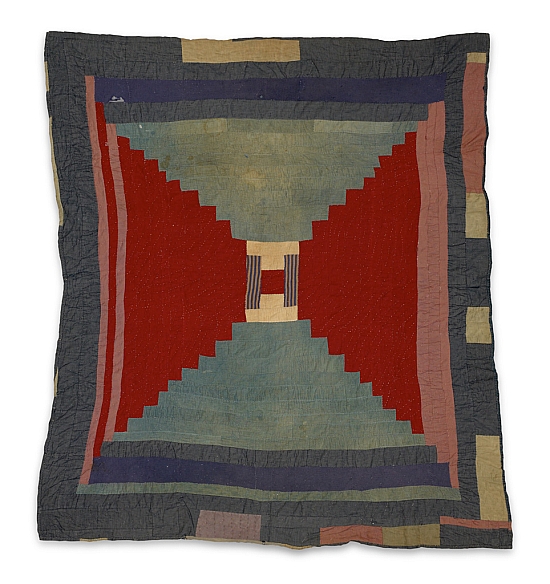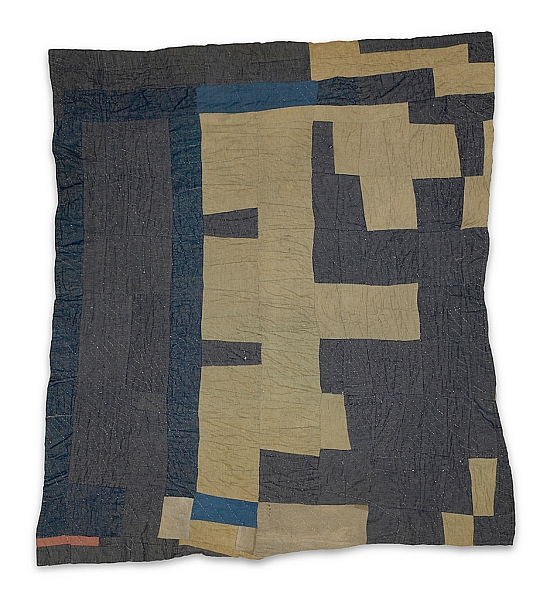Although Pettway eschewed confining her work to one specific style, this two-sided quilt: blocks and strips and “Bricklayer” is a remarkable example of the locally named “Bricklayer” pattern, one of the preferred styles of the women of Gee’s Bend.
On the top side of the quilt, Pettway pieces her fabric to mesmerizing effect as she builds the Bricklayer pattern out from the central block, aligning horizontal lines of faded blue denim with vertical red- and rose-colored strips. While her color palette was diverse, she was particularly drawn to red and pink hues. The internal push and pull—a visual call and response—seduces the eye with its perspectival play.
The bottom side of the quilt further demonstrates the improvisational impulses of the artist, where blocks and strips break free from the architectural symmetry of Bricklayer and are here deconstructed into their component parts. The lone strip of pink—perhaps a nod to the dominant conversation on the top side—illustrates the visual patchwork poetry in Pettway’s work.
Mining the creative potential of discarded materials, Pettway’s use of disused and recycled cloth, characteristic of many Gee’s Bend quilts, is a bricolage of sorts, composed of clothing worn laboring in fields and factories and the remnants of ragged shirts and dresses. Mary Margaret Pettway, the artist’s daughter and a fourth-generation quiltmaker, recalled receiving parcels of clothing from relatives in New York, noting that the pink material came from a childhood dress. The blue strips were cut from the jeans of her cousin; the quilt itself covered his bed for many years.
Both as functional objects to warm the family during harsh winters in unheated homes and as masterful works of art, Lucy T. Pettway’s work acts as an extended family portrait, with ancestral echoes detected in shirt tails and faded knees. In Two-sided quilt: blocks and strips and “Bricklayer” and other quilts, Pettway has transformed these relics into some of the most compelling abstract art in any tradition.

